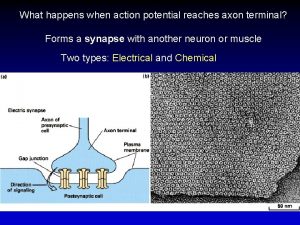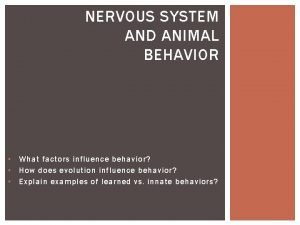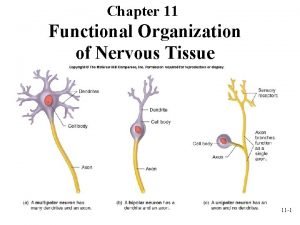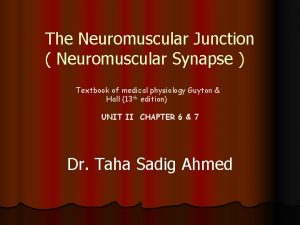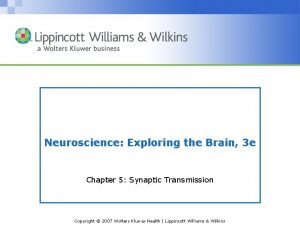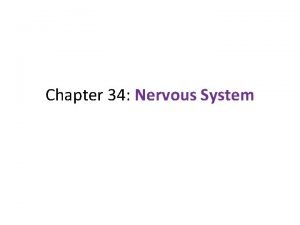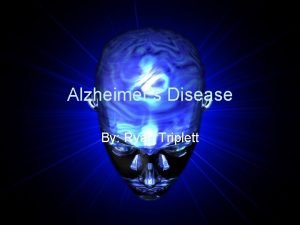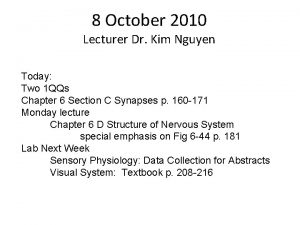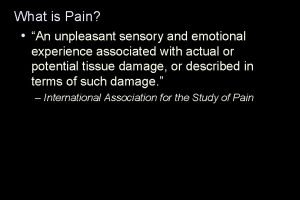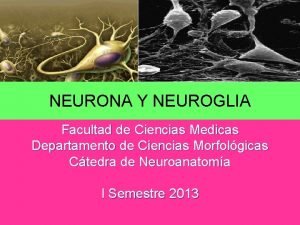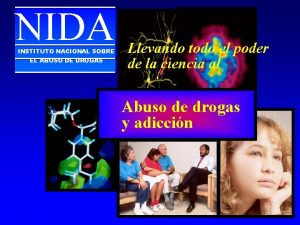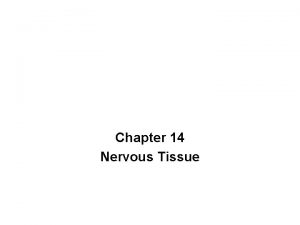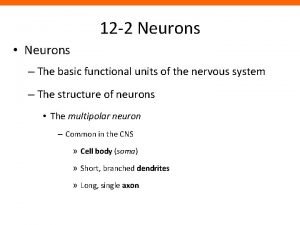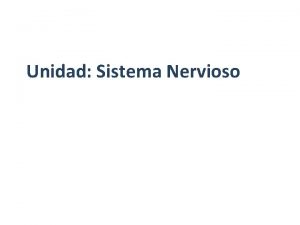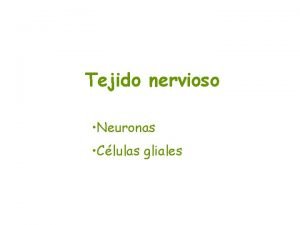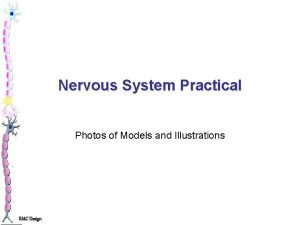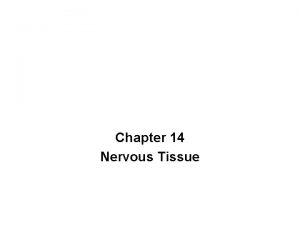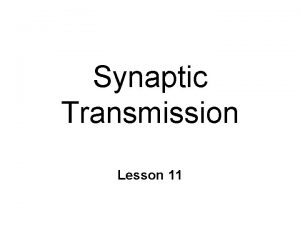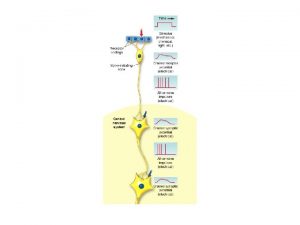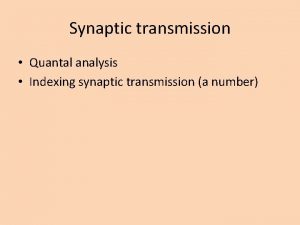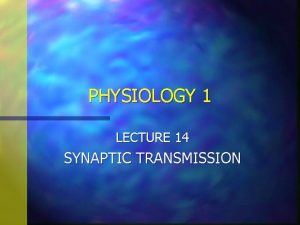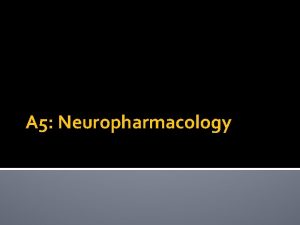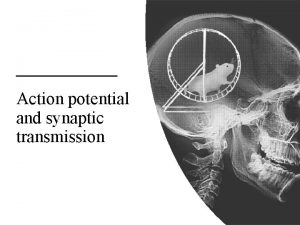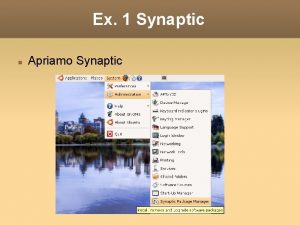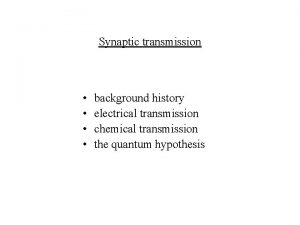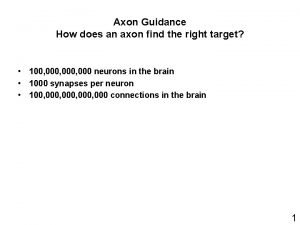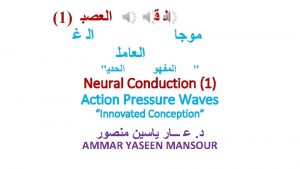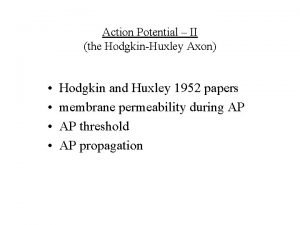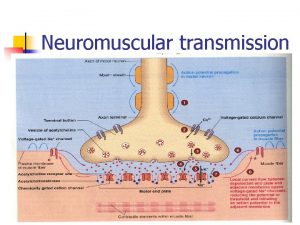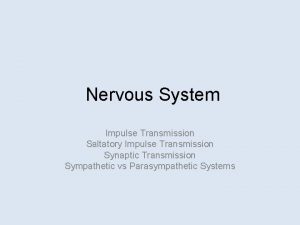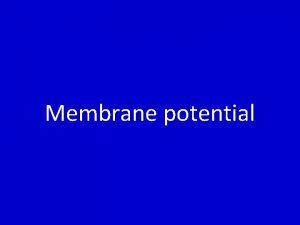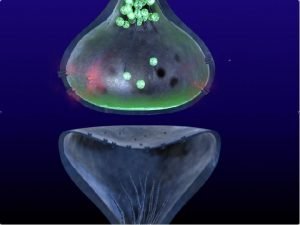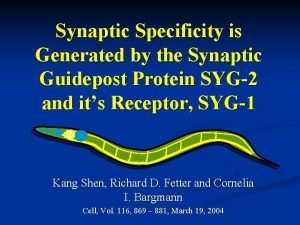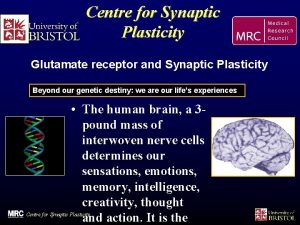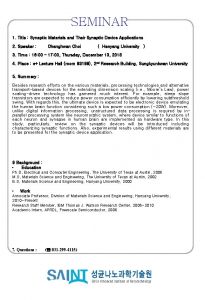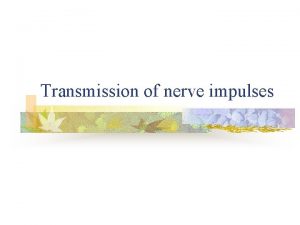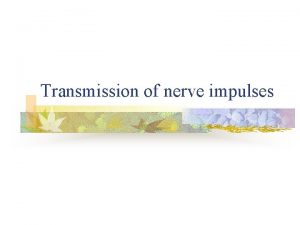Synaptic Transmission Synaptic Events Action Potential reaches axon

































- Slides: 33

Synaptic Transmission


Synaptic Events Action Potential reaches axon terminal n Chemical substance released Neurotransmitter (NT) n Diffuses across synapse n Binds to receptor protein EPSP or IPSP ~ n

Synaptic Transmission Model Precursor transport n NT synthesis n Storage n Release n Activation n Termination ~ n

Presynaptic Axon Terminal Button Postsynaptic Membrane Dendritic Spine

1. Precursor Transport

2. Synthesis _ _ _ enzymes/cofactors NT

3. Storage in vesicles

NT Terminal Button Dendritic Spine Synapse Vesicles

4. Release Terminal Button Dendritic Spine Synapse Receptors

Terminal Button AP Dendritic Spine Synapse

Exocytosis Ca++

5. Activation

6. Termination

6. Termination by. . . Diffusion

6. Termination by. . . Enzymatic degradation

6. Termination by. . . Reuptake

6. Termination by. . . Autoreceptors A

Autoreceptors On presynaptic terminal n Binds NT same as postsynaptic receptors different receptor subtype n Decreases NT release & synthesis n Metabotropic receptors l alters protein synthesis ~ n

Receptor Activation Ionotropic channel l directly controls channel l fast n Metabotropic channel l second messenger systems l receptor indirectly controls channel ~ n

Ionotropic Channels Channel NT neurotransmitter

Ionotropic Channels NT Pore

Ionotropic Channels NT

Ionotropic Channels NT

Metabotropic Channels Receptor separate from channel n 2 d messenger system l G proteins l c. AMP l other types n Effects l Control channel l Alter properties of receptors l regulation of gene expression ~ n

G protein: direct control NT is 1 st messenger n G protein binds to channel l opens or closes l relatively fast ~ n

G protein: direct control R G GDP

G protein: direct control R G GTP Pore

G protein: Protein Phosphorylation Open or close channels at resting Vm n NT = 1 st messenger n Membrane-associated components l Receptor l Transducer l Primary effector n Intracellular l 2 d messenger l Secondary effector ~ n

G protein: Protein Phosphorylation external signal: nt norepinephrine Receptor b adrenergic -R transducer primary effector GS adenylyl cyclase 2 d messenger c. AMP secondary effector protein kinase

G protein: Protein Phosphorylation A C R G GDP PK

G protein: Protein Phosphorylation A C R G GTP ATP c. AMP PK

G protein: Protein Phosphorylation A C R G GTP ATP P c. AMP PK Pore
 Axon terminus
Axon terminus Tapetum lucidum
Tapetum lucidum Synaptic potential
Synaptic potential Neuronal pool
Neuronal pool Graded potentials
Graded potentials Graded potentials
Graded potentials Difference between action and graded potential
Difference between action and graded potential Absolute refractory period
Absolute refractory period Source of bioelectric potential is dash in nature
Source of bioelectric potential is dash in nature Transmission across a synapse
Transmission across a synapse Neuromuscular junction
Neuromuscular junction Axon hillock
Axon hillock Action potential resting potential
Action potential resting potential Mutually exclusive events vs not mutually exclusive events
Mutually exclusive events vs not mutually exclusive events Thin filament
Thin filament Synaptic gutter
Synaptic gutter Lippincott williams & wilkins
Lippincott williams & wilkins Synaptic integration
Synaptic integration Ryan triplett
Ryan triplett Synaptic integration
Synaptic integration Screenless display technology seminar ppt
Screenless display technology seminar ppt Synaptic junction
Synaptic junction Synaptic pruning
Synaptic pruning Nociceptive
Nociceptive Label the features of a myelinated axon
Label the features of a myelinated axon Interventricular foramen
Interventricular foramen Axon golgi tipo 1
Axon golgi tipo 1 Axon hillock
Axon hillock Nucleus of neurolemmocyte
Nucleus of neurolemmocyte Anaxonic neuron structure
Anaxonic neuron structure Células neuronales
Células neuronales Diagrama de una neurona
Diagrama de una neurona Axon hillock
Axon hillock Nucleus of neurolemmocyte
Nucleus of neurolemmocyte
